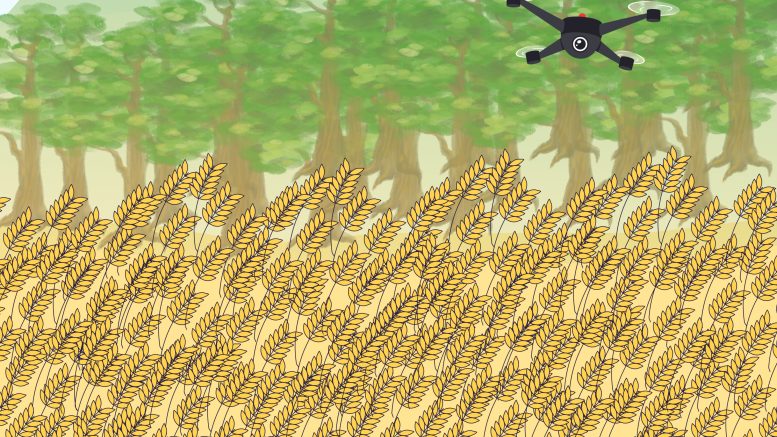Technological advancements have transformed how researchers monitor wheat growth, allowing them to use drones equipped with thermal imaging and advanced sensors to accurately track plant health and development.
Curt McCartney is an associate professor of plant science in the U of M’s faculty of agricultural and food sciences.
“I was always interested in genetics,” he said. “I took introductory courses in high school and got interested in genetics. I also grew up on a farm in southern Manitoba.”
McCartney explored various scientific fields during university, weighing options between plant genetics and other areas of study. Ultimately, he decided to focus on crop breeding after taking a third-year undergraduate class.
“I really enjoyed the intersection of my interest in genetics and my farming background,” he said. “I’m interested from the standpoint of trying to make the crops more adapted to Manitoba and more productive for farmers.”
McCartney joined the U of M in 2020 after working as a geneticist with Agriculture and Agri-Food Canada. There, his research focused on understanding the inheritance of key traits in wheat and oats to improve plant breeding programs.
Today, McCartney’s research plots are located on the U of M’s campus, as well as at the Glenlea Research Station and the U of M’s Carman, Manitoba site.
McCartney explained that by studying the genetic variation in different wheat and oat lines from around the world, researchers can identify beneficial traits and introduce them into Canadian crops to improve resilience and productivity.
“I’ve always been interested in plant breeding,” he said. “Plant breeding is taking that genetic information and applying it to develop new oat lines or wheat lines that have combined new traits that currently don’t exist for production in Canada.”
McCartney’s research focuses on identifying genetic markers associated with key traits in plant and wheat breeding, particularly resistance to diseases that impact farmers in the province.
These genetic markers help identify which plants carry desirable genes early in the breeding process, ensuring they are retained and not lost during selection.
“We’re working on utilizing drones to help us select for some of these traits that we’re interested in,” he said.
McCartney explained that winter survival is the easiest trait to identify using drones, making it a key factor in crop selection and research.
“I’m working on winter wheat breeding,” he said. “The winter wheat crop is seeded in the fall, typically in early September, and then it has to germinate and emerge out of the soil, and then it has to survive the winter.
“It’s pretty straightforward to then fly a drone over the field in the spring and evaluate in each of the plots how many green wheat plants are left.”
Assessing plant survival based on labour is challenging, as it requires the slow, meticulous process of examining each plot in the field and estimating the number of surviving plants. Drones streamline the process, allowing it to be done quickly and consistently.
McCartney explained that drones are being used in agricultural research worldwide to assess various crop traits, such as plant height and chlorophyll levels, which indicate overall crop health.
He is exploring the potential of drones for selecting disease resistance. He acknowledged that this application may be more challenging, but he expects advancements in drone technology to progress in that direction over time.
“[Eventually], there will be ways of flying the drones over the field and getting images, and being able to assess the individual plots resistant [to disease],” he said.
Usually, reading thousands of crop plots for individual diseases is a highly time-consuming process. However, McCartney explained, drones can complete this work quickly.
“[Without drones], it’s very difficult,” he said. “But if we add a mechanism that can quickly fly over a field and maybe take 20 to 30 minutes, then the work after would be using some software to pull out the data.”
This approach could be a highly effective method for enhancing the crop’s genetics to achieve the desired improvements.
McCartney noted that plant breeding is a collaborative process involving experts across various fields.
“I want to emphasize that agriculture is a major contributor to the economy of Manitoba,” he said.


